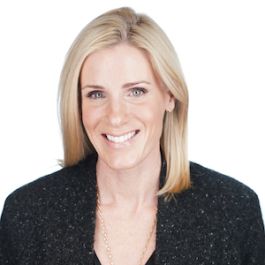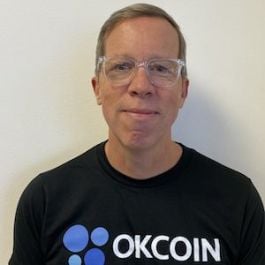Of all your professional relationships, your rapport with your boss will always be one of the most important. But when your immediate superior is the CEO, and your relationship with them will in turn affect the work lives of an entire team’s worth of professionals under your oversight, the importance of that relationship magnifies considerably.
Leaders of people, recruiting and human resources teams occupy a unique niche within a company and, therefore, have a unique relationship to the chief executive. They advocate for the best interests of the company’s employees while recognizing they can’t promise the world to everyone. They are tasked with mapping the skills of human beings against a set of business forecasts, and are asked to fill the gaps. It’s a constant game of ensuring everyone is happy and fulfilled at work while also making sure their goals are aligned toward the overall needs of the business. They are also often the closest member of a leadership team to the culture and everyday experience of the workforce as a whole and, therefore, often act as a CEO’s eyes and ears while simultaneously being an advocate for that workforce within the CEO’s office.
In short: A big chunk of a business’s success — especially that of a fast-growing tech company — depends on a great partnership between people team leaders and the CEO. How do you build and maintain that relationship? We spoke with four leaders at four tech companies across the U.S. to find out.
Background: Kass said her biggest strengths as global head of recruiting for Highspot include her knowledge on how to operationalize at scale and ensuring the company’s recruitment engine has the right tools and systems at its disposal. A quality candidate experience goes a long way to fulfilling her goals, she said, as does an equitable hiring process. The sales enablement company has plenty of growing left to do, having added $200 million to a funding war chest worth almost $400 million this past February.
CEO: Before founding Highspot, Robert Wahbe spent more than 15 years leading Microsoft’s server and tools division after the Redmond, Washington software giant acquired his first company back in 1996.
You will have access to 50+ pages of data, tips, and advice.
How can people leaders build trust with their CEO?
Building trust with leaders across the company starts with knowing your business inside and out through leveraging both qualitative and quantitative data. Too often, people teams pivot on qualitative metrics alone, when quantitative data has the power to reveal questions you should be asking and insights that inform strategic action. Only then can you have a clear picture of how to align your organization to support the growth of the business. People leaders need to operate like any other department — achieving deep business acumen, understanding exactly the role their function plays in moving the company forward, and setting KPIs and OKRs for their team that map to larger company objectives.
“Seek to listen and understand.”
How do you ensure your goals (and those of your team) are aligned with the business’s broader vision and strategic objectives?
We make hires so the company can achieve its business goals. By deeply understanding our teams’ objectives, speaking the same language — including agreed-upon role definitions — and staying in tune with the current state of the business and where it’s going next, we can anticipate needs and proactively prepare to meet them. Moreover, keeping a steady pulse on changing business goals allows us an avenue to consistently prioritize. It’s critical to build strong relationships across functions and establish rhythms to look around the corner so we can ensure we’re working on the highest-order bit first.
People teams are plugged into the everyday culture and sentiment of employees. If a people leader sees that an executive initiative is proving counterproductive, how should they approach that conversation and voice their concerns?
First, be curious — seek to listen and understand. It’s best to assume positive intent and investigate, putting yourself in others’ shoes to see if you can get a clear picture of their point of view. If a shared understanding still isn’t reached, then it comes down to having a real and open conversation about how to achieve alignment, so that we’re all working together to sail the ship in the same direction.
Background: As a provider of graph database management systems for everyone from Comcast to NASA to the U.S. Army, Neo4j is growing quickly. In fact, Thornby said the company will have soon doubled its headcount during the pandemic. And Thornby’s to-do list doesn’t end there: The company plans to continue scaling into 2022 while simultaneously deepening its DEI efforts and building a foundation for internal career development.
CEO: Emil Eifrem is one of the founding figures of graph database technology, reportedly sketching out what is known today as the property graph model during a flight back in 2000.
What would you say are your main strengths as a people leader, and how do they complement the skills and expertise of your CEO?
My position as head of people at Neo4j requires me to be an evangelist, a creative thinker and an influencer. One area in which I excel is working closely with executives to help them understand their strengths and development areas, and then coaching them to focus and improve on those development areas. I also pride myself on attracting and retaining stellar talent — especially at Neo4j, but in my previous positions as well.
Our CEO, Emil Eifrem, is a brilliant technologist who has vision, passion and a strong desire to preserve our extraordinary culture. He’s passionate about keeping what makes Neo4j unique while also realizing some things need to change as we grow. He’s a natural leader but also a first-time CEO, so we complement one another because of my extensive experience helping fast-growing companies scale successfully. I have a sense of the potential challenges we’ll face next as a company, and Emil and I will continue to collaborate to ensure we’re ready to meet them.
“Open communication is everything.”
How can people leaders build trust with their CEO?
There are a few ways people leaders can build trust with their CEO. Both parties must have a strong desire and ability to listen and understand — open communication is everything. Direct, honest feedback and full transparency at all times are also key. This also means both parties need to be willing to acknowledge areas of the business that need improvement.
People leaders also need to understand the business and the challenges the CEO might be facing and adapt the people strategy to map back to the overarching business goals. I’m fortunate to have spent more than half my career on the business side, so I understand the push and pull of doing what’s right for our people while also being realistic about what the business can support.
If a people leader sees that an executive initiative is proving counterproductive, how should they approach that conversation and voice their concerns?
It starts with trust. My number one priority is building trust with our teams and our leaders. Once that trust is established, it’s a matter of having an honest conversation. People teams should treat conflicts or issues like any other conversation and raise the feedback in a way that isn’t attacking or criticizing but instead points out the issues that might arise (or have already arisen) from the initiative — and have data or examples to back it up. I typically try to understand the thought behind why an initiative was set up in the way it is, or why a specific approach was taken to better understand how we got to where we are, and then start poking holes in an inquisitive way: “How do you think it will go when X happens? How do you think employees will receive Y? Tell me more about that.” With the right questions and a different perspective, you can often lead the person to the right answer on their own.
Background: Cryptocurrency trading and education platform Okcoin has spent the last year obtaining licenses to trade in new territories and adding new coins to its list of supported assets. As its operations scale, Lehto said his existing team members must “evolve from generalists” into more specialized roles. Under the OKR system, Okcoin’s people teams are constantly making sure their objectives remain in lockstep with the overall goals of the business.
CEO: Hong Fang started her career in investment banking, and later served as Okcoin’s chief operating officer before taking on the chief executive role last April.
What would you say are your main strengths as a people leader, and how do they complement the skills and expertise of your CEO?
My main strength as a people leader is my ability to coach and inspire our teams. This has been tested daily over the last year and a half. Another strength is my ability to constantly look for new ways, both internally and externally, to improve our employee experience and scale our company. This was already occurring prior to COVID-19 but has only been accelerated with remote work and changing modes of communication.
My CEO is both a visionary and a hands-on operational leader. She is people-focused and execution-focused. I feel I complement my CEO most successfully when I can take her vision and offer her multiple perspectives and options to execute our goals.
“Your CEO does not need people around her to please her ego. She is looking for deep expertise and candor.”
How can people leaders build trust with their CEO?
CEOs need to know that you are on top of your function. This means bringing issues to them before they address them to you. It’s a balancing act at times, since you know your CEO is juggling multiple priorities beyond your own and you want to respect their time. Being proactive and closing the loop on projects and requests is also critically important to building trust and credibility.
If a people leader sees that an executive initiative is proving counterproductive, how should they approach that conversation and voice their concerns?
The people leader needs to be an extra set of eyes and ears for your CEO. She is expecting you to have a people-first mentality and to balance that with a business focus. Your CEO does not need people around her to please her ego. She is looking for deep expertise and candor — if you see something, say something.
In these rare instances, approach the CEO with your perspective, back up your observations with data and provide potential solutions. Usually, this should be shared one-on-one. It can be in writing if it’s simple to explain and asynchronous communication is required. Otherwise, pick up the phone and talk it through so there is no room for miscommunication.
Background: Over the last two years, Kubernetes edge application Ambassador Labs has evolved into a remote-first workforce. As the company’s head of people, Poshala says her job is to arm the team with the best tools and technologies possible to keep them productive and connected. Poshala has developed her people leadership skills at tech companies large and small across the United States and Southeast Asia.
CEO: Ambassador Labs co-founder and chief executive Richard Li has experience leading engineering and product management teams at a who’s who of security and open source companies, including Red Hat, Rapid7 and Duo Security.
What would you say are your main strengths as a people leader, and how do they complement the skills and expertise of your CEO?
One of the best parts of being a people leader is the ability to develop relationships across all teams. Whether it’s collecting feedback, coaching people or building out new programs, it’s imperative for me to bring people along the journey. This naturally gives me the opportunity to better understand personalities and priorities across our diverse and broad employee landscape. Given that Ambassador Labs is a fast-growing global team with a big vision, it’s been excellent to see how dialed in our CEO and co-founder Richard Li is into the goals and challenges that each team faces. It’s been important to him to remain supportive and encouraging in each team member’s individual growth path. By remaining engaged regularly with individuals and within their teams, we are able to act quickly to set our people up for success.
“Know which priorities must be pursued now to make a strong impact, and be willing to adjust priorities on a quarterly basis to ensure they support your long-term goals.”
How can people leaders build trust with their CEO?
CEOs have an enormous responsibility as the leader of the company. They are heads-down in many aspects of the business and may not have the time they’d like to be engaged with employees on a regular basis. As a people leader, I make it a priority to maintain that engagement with our people and with my CEO. I also make myself readily available to listen and provide advice in a non-judgmental way. I find this to be a sure path toward quickly building trust. In my view, a core role of a people leader is to make leaders feel valued. On the flip side, it’s important for CEOs to have an accurate pulse on their employees — this may sometimes require you to give them tough feedback so that they are prepared in front of larger audiences, and you need to be willing to do this.
It’s also important to understand the right trade-offs to make. My priorities as a people leader will, at times, conflict with the priorities of my CEO. It’s important to have a long-term plan together. Know which priorities must be pursued now to make a strong impact, and be willing to adjust priorities on a quarterly basis to ensure they support your long-term goals. I also believe weekly one-on-one meetings with the CEO are critical, as it’s an opportunity to be transparent with each other and ensure we’re tracking along the right path.
How do you ensure your goals (and those of your team) are aligned with the business’s broader vision and strategic objectives?
Ambassador Labs is building its employee journey alongside the journey of our growing user and customer base. Our people journey starts with hiring, then onboarding and then development. We are quite bullish on investing in our people, so we regularly speak about how we can further support their goals and growth path within the company.
How to create core values that will inspire your workforce.











